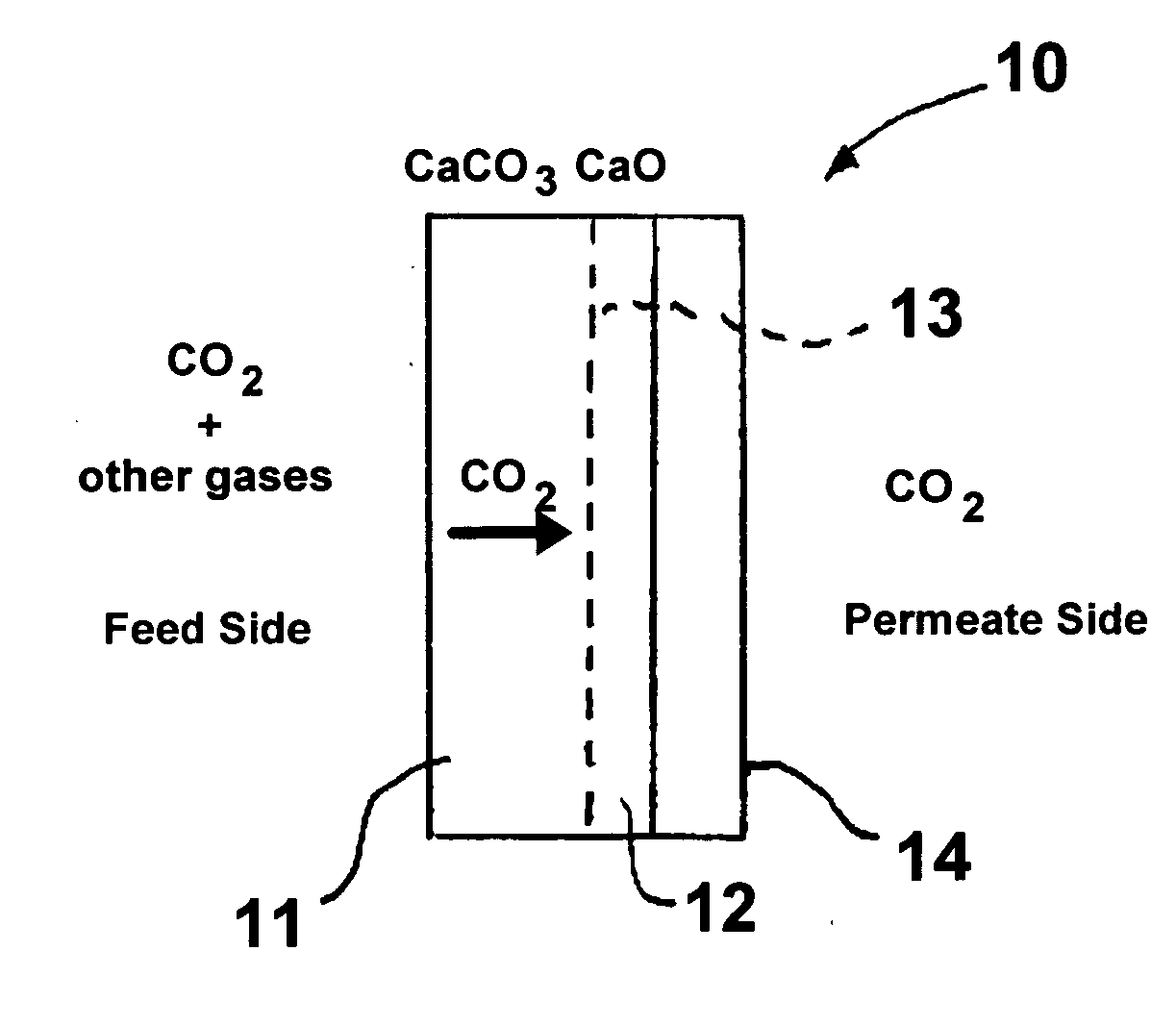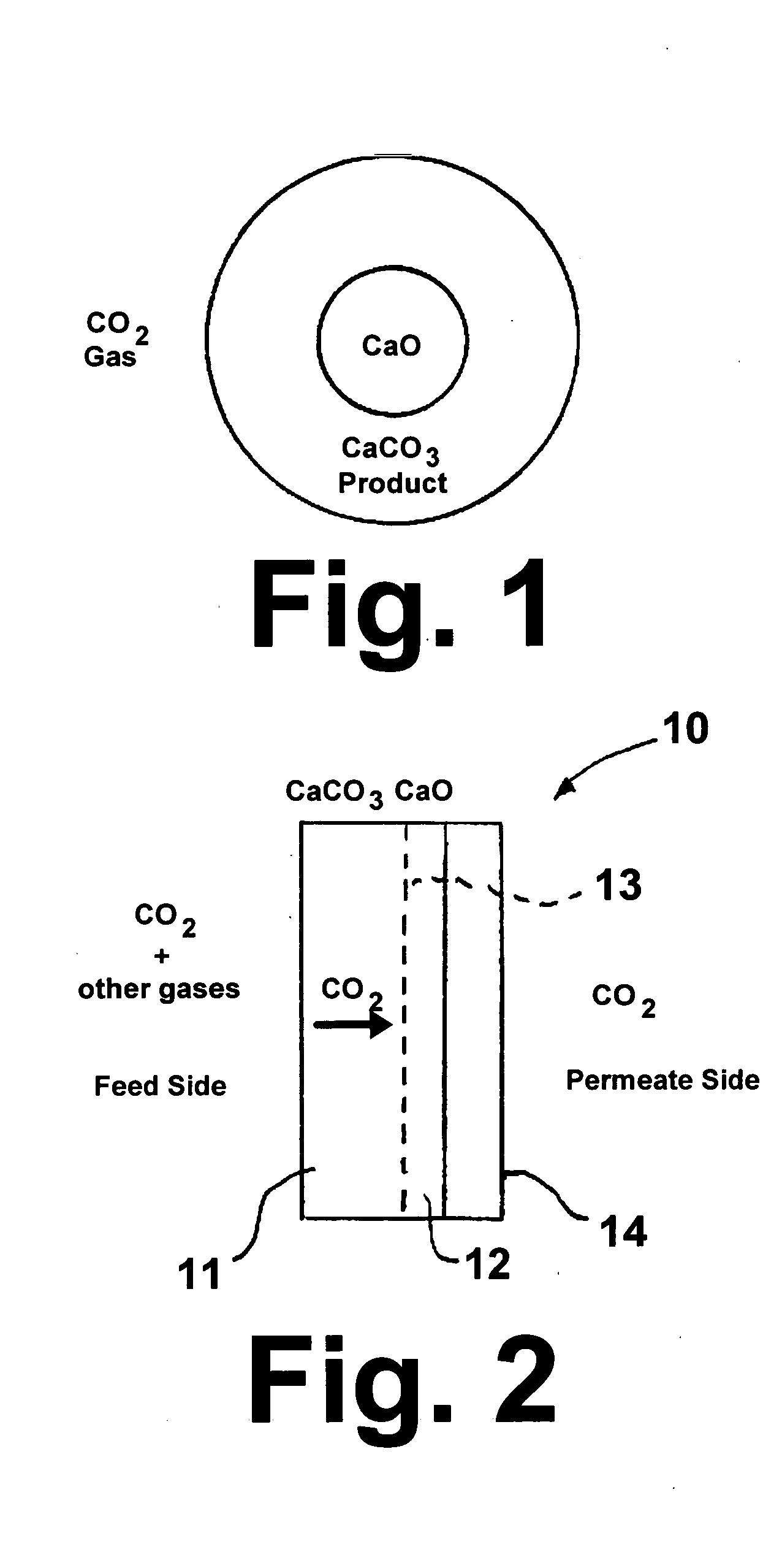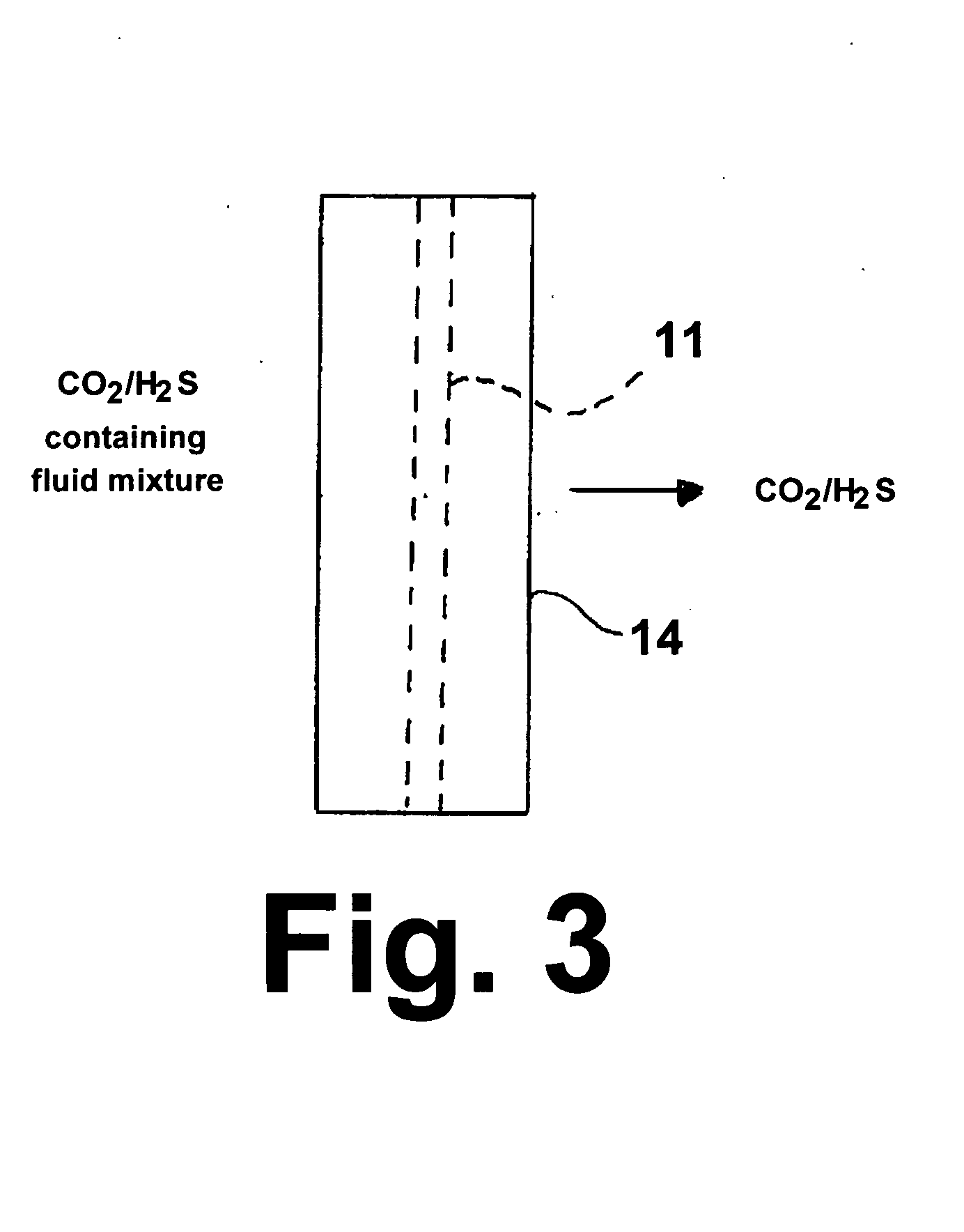High-temperature membrane for CO2 and/or H2S separation
a high-temperature membrane and co2 technology, applied in the field of co2and h2s separation membranes, can solve the problems of not being suitable for large-scale power plants, not being cost-effective, other technologies are not yet mature, etc., and achieve the effect of increasing hydrogen production, high diffusion flux, and ensuring the separation of co2
- Summary
- Abstract
- Description
- Claims
- Application Information
AI Technical Summary
Benefits of technology
Problems solved by technology
Method used
Image
Examples
example
[0031] In this example, a nonporous CaCO3 membrane was produced using CaCl2.2H2O powder obtained from Alfa-Aesar, Ward Hill, Mass., Na2CO3 powder obtained from Aldrich Chemical Company, Milwaukee, Wis., and a porous alfa-alumina support tube having a nominal pore size of 50 nm, an inside diameter of 3.5 mm, an outside diameter of 5.5 mm and a length of 2 inches obtained from Media and Process Technology, Inc., Pittsburgh, Pa. The support tube was closed at one end using a silicone stopper and filled with 0.5M CaCl2 solution. The filled tube was immediately dipped into another solution containing 0.5M Na2CO3. Care was taken to avoid mixing of the two solutions except at an interface within the support tube wall, where calcium and carbonate ions react to form CaCO3 crystals. After 24 hours, the tube was removed, the excess solution shaken off, and dried in an oven at 110° C. for 2 hours. Based upon the initial and final weight of the tube, it was determined that about 10 mg of CaCO3 w...
PUM
| Property | Measurement | Unit |
|---|---|---|
| diameter | aaaaa | aaaaa |
| diameter | aaaaa | aaaaa |
| diameter | aaaaa | aaaaa |
Abstract
Description
Claims
Application Information
 Login to View More
Login to View More - R&D
- Intellectual Property
- Life Sciences
- Materials
- Tech Scout
- Unparalleled Data Quality
- Higher Quality Content
- 60% Fewer Hallucinations
Browse by: Latest US Patents, China's latest patents, Technical Efficacy Thesaurus, Application Domain, Technology Topic, Popular Technical Reports.
© 2025 PatSnap. All rights reserved.Legal|Privacy policy|Modern Slavery Act Transparency Statement|Sitemap|About US| Contact US: help@patsnap.com



